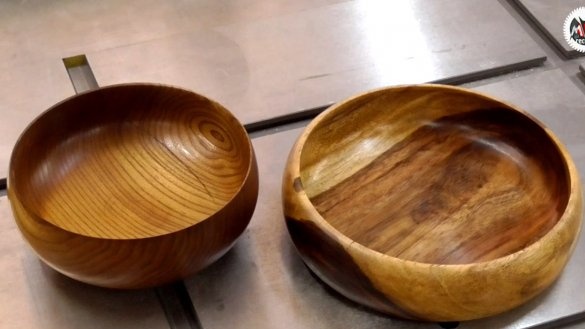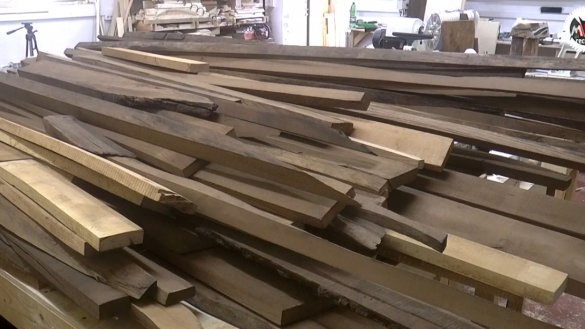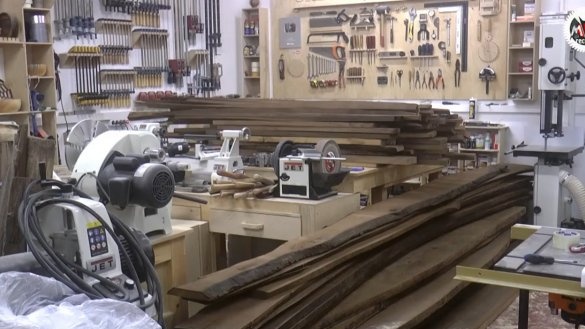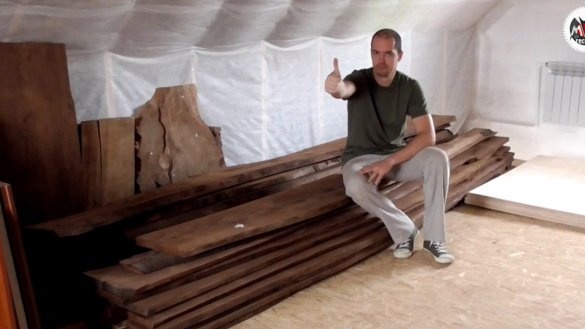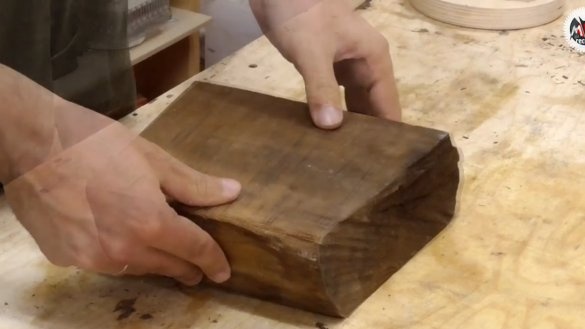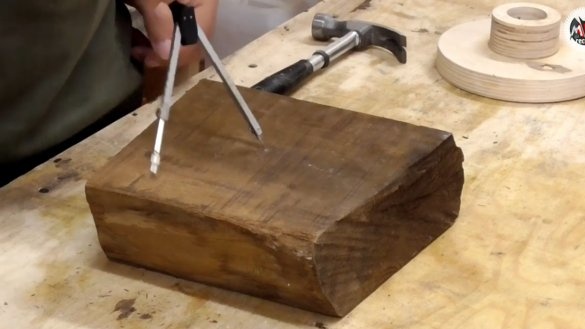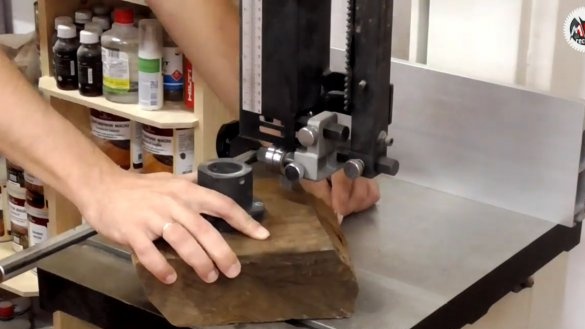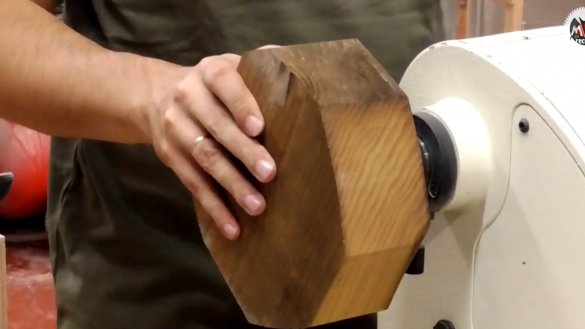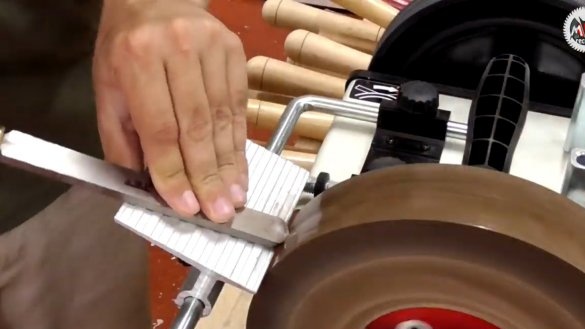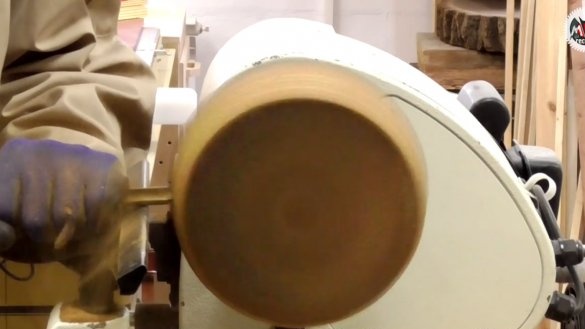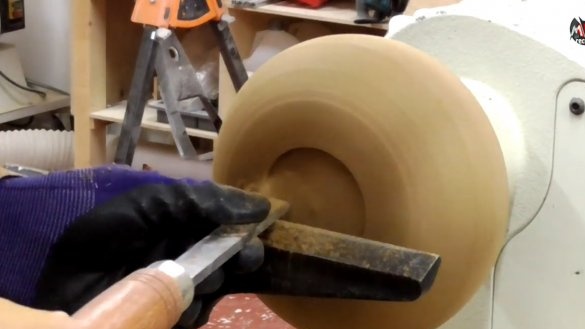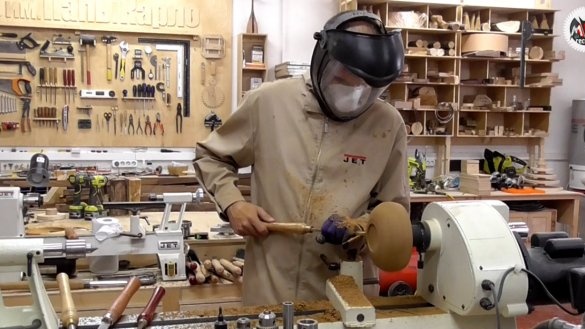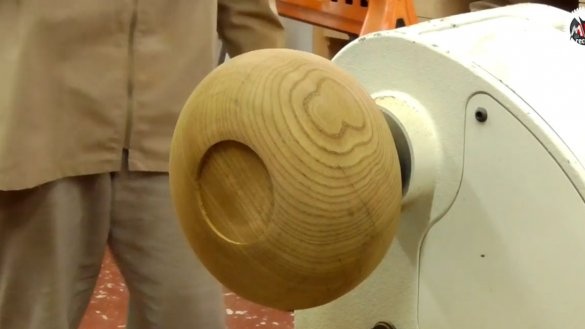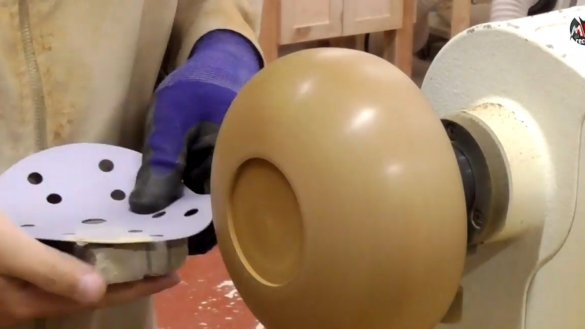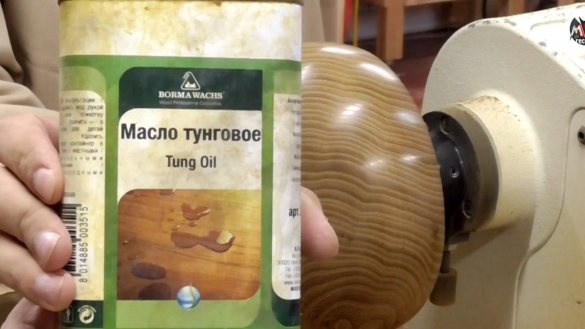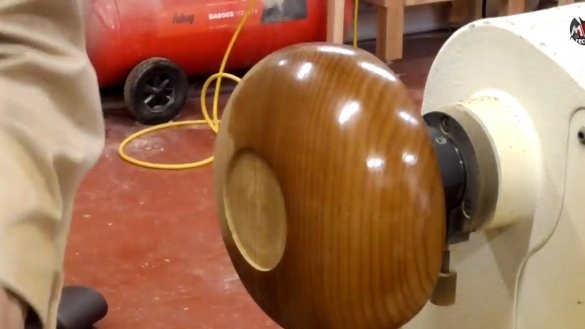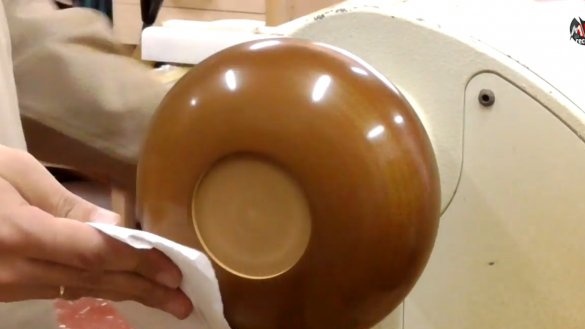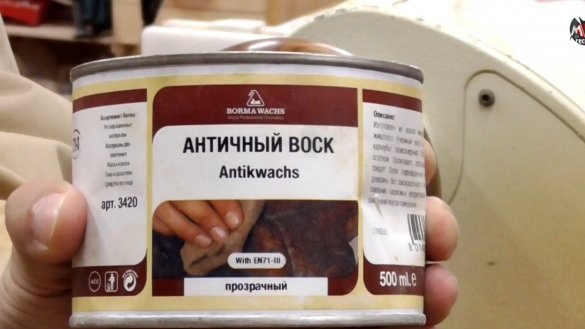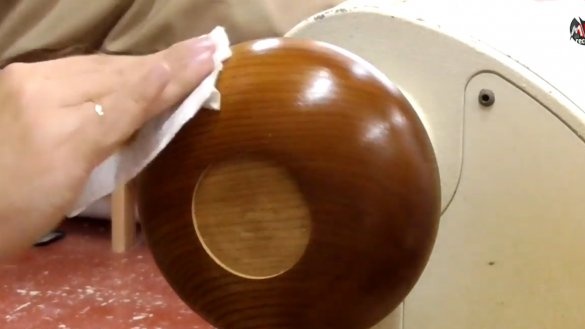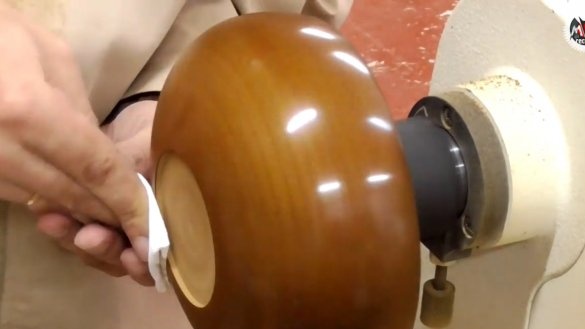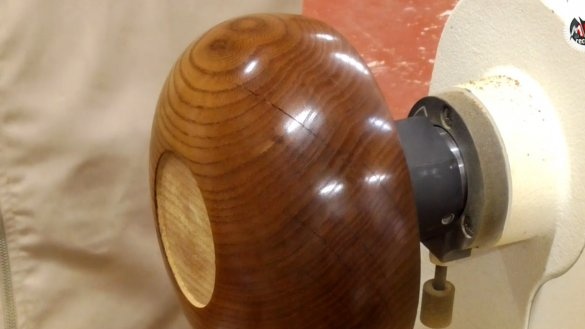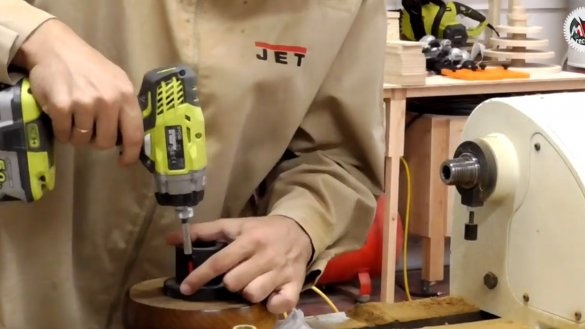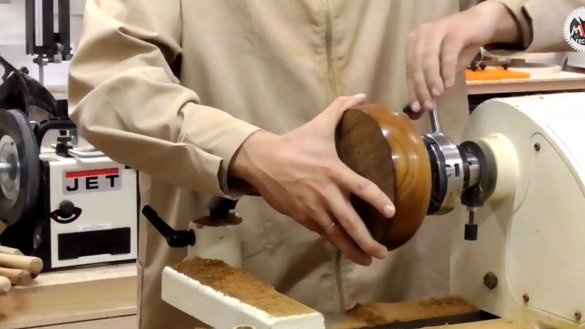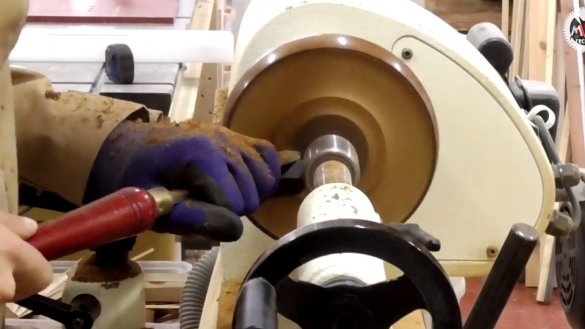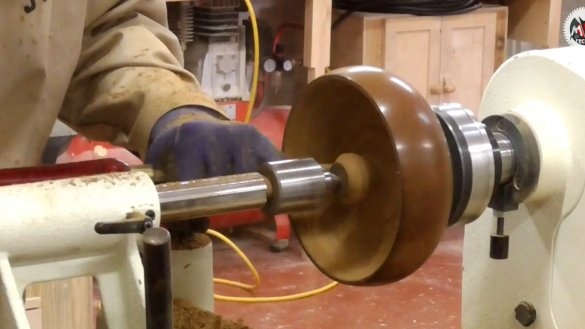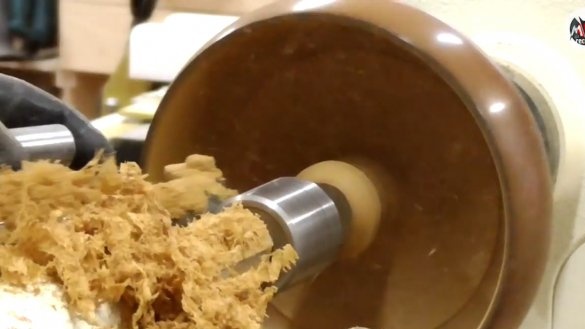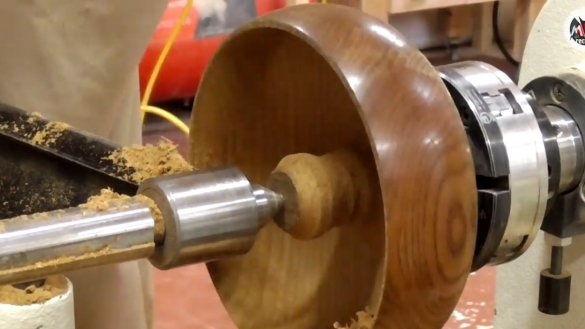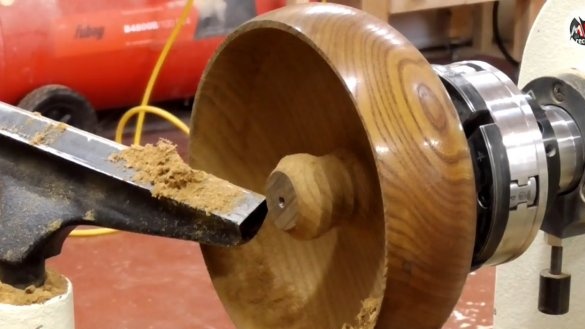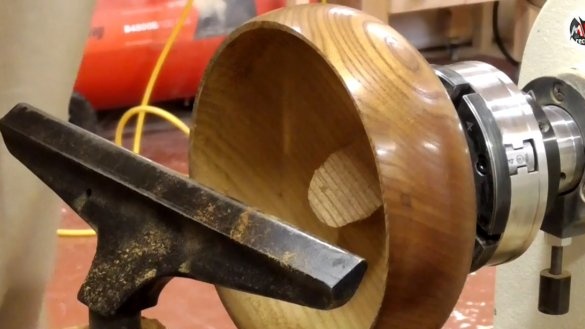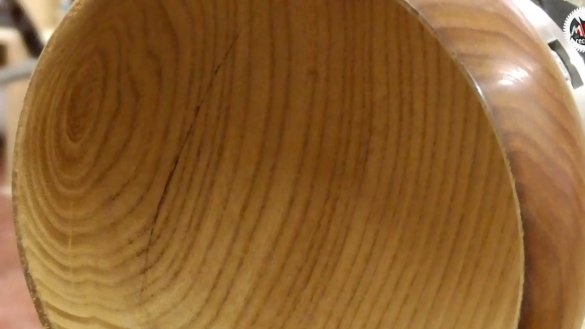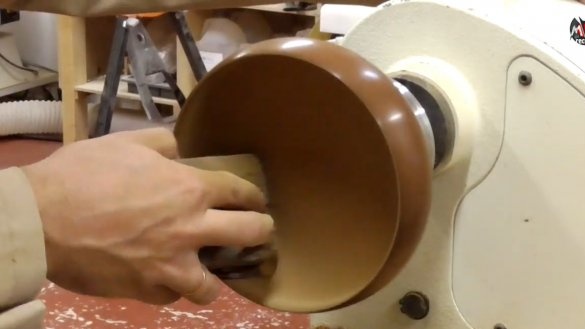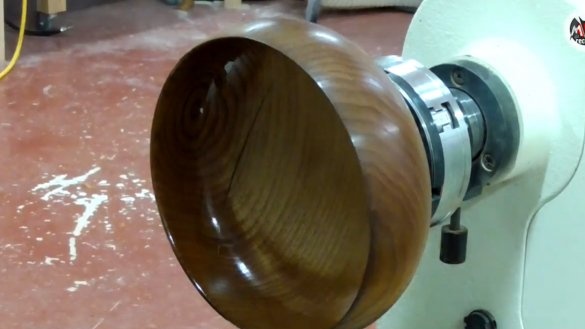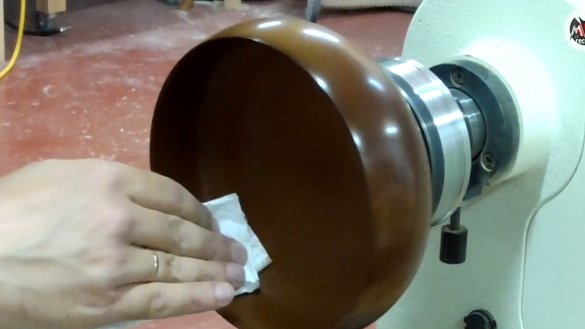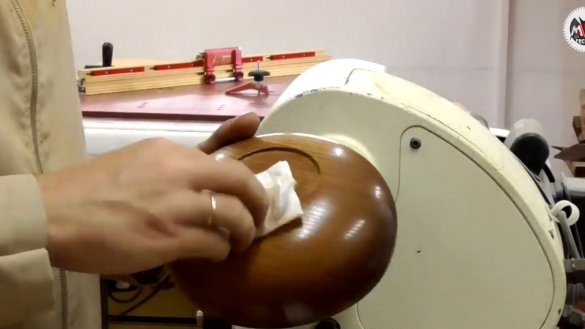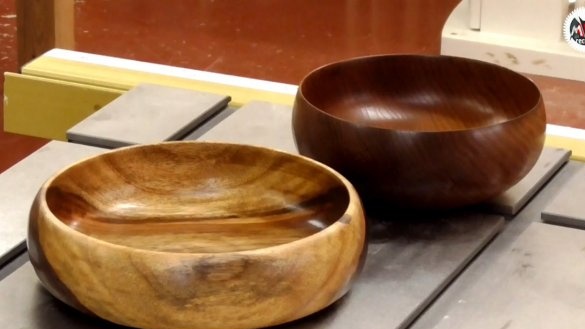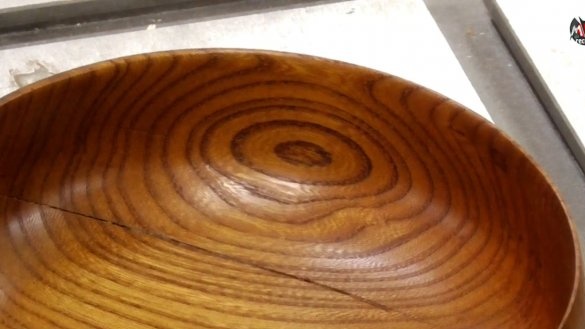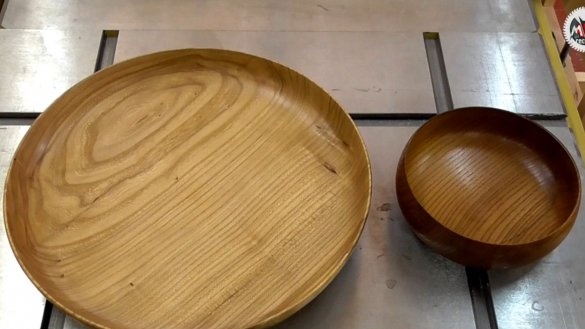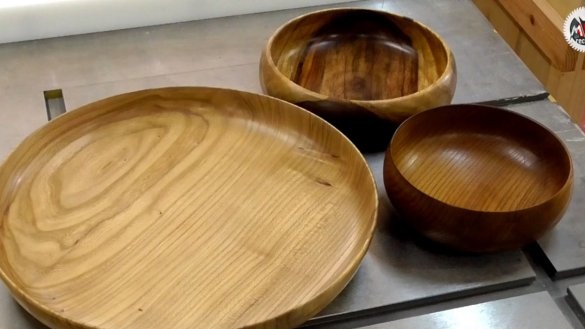This article will focus on thermal wood and how it behaves during turning.
The author of this homemade product is Maxim Kozlov (YouTube channel "Maxim Kozlov"). Not so long ago, the author thoroughly purchased material from various hardwoods of varying degrees of roasting (termination).
The master began sorting the new material, which was about 2 cubic meters of edged and unedged boards of beech, elm, Canadian oak and a little ash of varying degrees of termination.
So, the material is disassembled, now you can proceed directly to the experiments on turning the thermal tree. We’ll take this scrap for a test, which is waiting for its turn for about a month.
Well, first of all, the author really wanted to experience the thermo elk, of which he had more than half. Moreover, to test in the most classic version, that is, to carve a deep plate from a single piece of rock, which, in addition to everything else, was significantly cracked.
Of course, you don’t have to think about these flaws and simply pour them with resin, but here you had to understand how critical all this was with various manners of turning, up to aggressive removal. Naturally, it is also necessary to take into account the fact that the thermal tree has a high barb. Of course, the results of a single experiment do not give the right to draw any serious conclusions, but still any idea about the processing of wood of this type can still be obtained.
About a year ago, the author first encountered thermal ash wood. Undoubtedly, this is an incredibly beautiful texture and color, but the rather pungent smell of burnt wood coming from just a few meter boards makes you think. But recently, the author found out that not everything is so bad and there are several termination technologies that are quite adequate in relation to the sense of smell. And making sure in production that all this was not comparable in smell to those few thermo-ash boards that the author had in the studio once, he again looked at the termichka as a way to save money on dark woods, which, moreover, like as a rule, the darker the higher the cost.
As described in the production of such wood, the termination process in this case occurs through the products of gas combustion, without vacuum and convection. Thanks to this technology, the tree does not boil in its own juice and everything unnecessary comes out of it completely.Hence the minimal smell, which played a decisive role in this case.
So, returning to our product, it is worth noting that the thermo-elm is exactly the same as regular dry, the only difference is that even when turning along with the shavings, fine dust is present, which is present at all stages of woodworking starting from planing. This is very noticeable already on the jointer, the table of which is quickly covered with fine dust of a dark color.
Next, you need to go through the full circle of grinding with grain from 40 to 600 Grit. The odor during grinding did not seem to change, but the ceiling filtration system still worked constantly. Actually, thanks to this system of air purification in the workshop atmosphere there was not a very large amount of fine dust.
Then proceed to the oil finish. It is necessary to impregnate the product twice, since the highly porous elm absorbs oil with special greed.
Be sure to wait a while before removing excess oil or polishing at rpm, otherwise most of the unpolymerized oil will come out of the material capillaries back under the action of centrifugal forces.
Next, the product is coated with wax.
As for wax, here, in contrast to oil, a little vice versa. In this case, you can give more speed and when polishing, try to squeeze a napkin or rag as hard as possible, thereby warming up the wax. But ideally, it is worth doing after a considerable amount of time, when the oil is guaranteed not to go back.
With a landing niche coating, you should never rush in order to avoid scrolling the product in the jaws of the cartridge. Next, you need to get rid of the faceplate and install our product in the cam release on the cartridge.
At the same time, it is necessary to tighten the tailstock, especially not knowing how the new tree will behave. In addition, it should be periodically tightened with a key in order to prevent weakening.
For the internal boring, the Brukshen cutter will come to the rescue, which, due to the additional lever resting on the handle, does not allow the overturning moment on the cutting edge to do its vile deed. Thus, this allows you to process a rather capricious product without excess vibration and shock, bringing the walls to a minimum thickness.
The only moment that is characteristic of a thermal tree and was already mentioned earlier is its causticity. And in front of us there is a sample of the stub of the workpiece, which remained from the tailstock.
When removed, it cracked almost immediately, since it was not beyond the given plane. Nevertheless, for wood not thermally processed, such a moment is still quite rare. Plus, in the process of turning a rather serious crack opened.
But here we can say that in this case it was lucky, since this crack did not pass through the fibers and therefore did not affect the bore in any way. If it so happened that the crack runs along the fibers on the preform, then it is better to fill it with resin, otherwise there is a high probability of completely losing the preform, and it may come in handy for you.
Despite the fact that the internal bore went quite smoothly and managed without scratches, the grinding process must be repeated in a full circle, and then cover the whole thing with oil.
As you can see, the thermo-elm has simply a magnificent texture, which shimmers no worse than oak. But at the same time sharpening elm is much easier.
And only at the very end we cover the ledge under the cartridge with oil.
For comparison, the author put a plate of Pakistani walnut next to the resulting product, which for the most part looks even lighter.
Well, in conclusion, for clarity, a comparison with the usual non-terminated elm.
That's all. Thank you for attention. See you soon!
Author's video:

